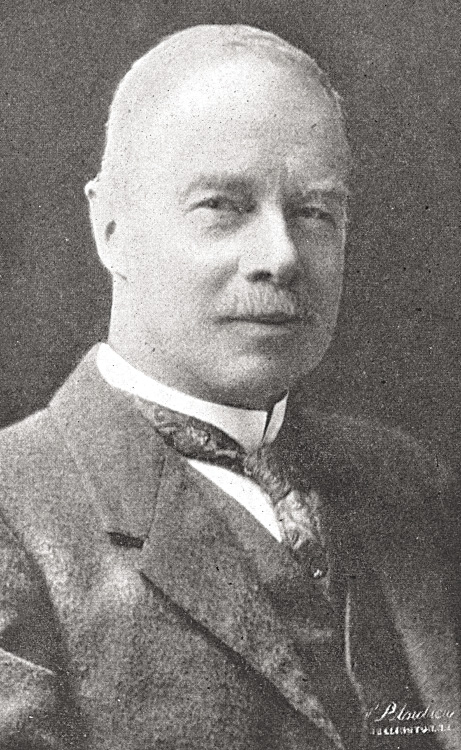Thunder Bay was first in world to implement daylight-saving time
More than one billion people in over 70 countries now observe daylight-saving time (DST) by re-setting their clocks to ‘’Spring Forward, Fall Back.” To get an extra hour of evening light, we put our clocks forward one hour in the spring and then we turn them back an hour in the fall.
While Benjamin Franklin was the first to write about wasted daylight while in Paris France in 1784 (he proposed everyone rise earlier to make use of morning sunlight and therefore, save on the use of candles for lighting), and Sir Winston Churchill and Sir Arthur Conan Doyle supported British efforts to adopt daylight-saving time in Britain, it was the small Northwestern Ontario town of Port Arthur (now Thunder Bay) on Lake Superior that was the first place in the world to implement a time shift to gain an extra hour of daylight, thanks to the advocacy of John Hewitson.
Toronto-born, Hewitson had moved to Port Arthur around 1904, after working as a Zenith Mine clerk and teacher at the small village of Rossport on Lake Superior. He was such a well-liked young man in Rossport that years later a river was named after him, the Hewitson River, which begins in Whitesand Lake, goes over Rainbow Falls before flowing into Lake Superior about five miles east of Rossport.
In Port Arthur, Hewitson was an accountant, then partner in the contracting firm Stewart & Hewitson (they built the city’s historic Lyceum Theatre), and a few years later, owner of his own construction company, Hewitson Construction.
Hewitson, an outdoor sports enthusiast, felt the summer evenings were too short and looked at ways to gain an extra hour in the evening to enjoy his passion for sports and exercise. At the time, Port Arthur was on Central time (same as Minnesota is now) and his proposal was to gain the extra hour of daylight in the evening by switching to Eastern time. The town council agreed, implementing a two-month time switch in the summer of 1908.
The extended summer evening daylight was so popular that the following year, the residents passed a referendum to permanently change year-round from Central to Eastern time. A year later, in 1910, the neighboring town of Fort William also switched to Eastern time. At the time, the Canadian parliament had rejected national DST.
History credits Franklin with first writing about the economical benefit of using morning sunlight instead of candles while he was the American envoy to France. He didn’t propose DST but rather measures such as taxing window shutters, rationing candles and waking Parisians up earlier by firing cannons at sunrise or ringing church bells. He published an essay—some say it was satire — titled “An Economical Project of Diminishing the Cost of Light,” and estimated Parisians could save $200 million by using sun instead of candles. The idea never went anywhere.
About 100 years later, in 1895, a New Zealand entomologist, George Vernon Hudson, invented the modern DST when he presented a paper at the Wellington Philosophical Society that proposed a two-hour shift forward in October and two-hour shift back in March. There was much interest in the idea, but nothing came of it, even after he presented a second paper in 1898.
In 1905, an English builder William Willett, independently conceived of DST during his early morning horseback riding and noticing no one else was around. For the next two years, he worked out the details of his DST ‘’clock-shifting’’ proposal: moving the clocks 20 minutes forward each four Sundays in April and move them back 20 minutes on four Sundays in September. At his own expense, he published and distributed a pamphlet, The Waste of Daylight, promoting Summer DST in the United Kingdom. The proposal made it to the British parliament in 1907, but it was rejected as were subsequent attempts. Then came World War I and suddenly, DST became popular as a wartime energy savings measure.
On April 30, 1916, Germany and its allies became the first country to implement DST (German Sommerzeif) as a way to conserve fuel. Less than a month later, Britain adopted Summer Time (DST) and other European countries followed, while the U.S. waited until 1918. After the war, most countries abandoned DST and went back to standard time until World War II, when DST was again implemented.
During World War II, the US implemented year-round DST (‘’War Time’’ as it was then known) from Feb. 9, 1942 to Sept. 30, 1945, expiring six months after war’s end. As a result, from 1945 to 1966, each American state, county and municipality was free to choose if, and how, they wanted to observe DST, and that created confusion, like the St. Paul-Minneapolis DST fiasco of May 1965. That’s when St. Paul voted to start their DST two weeks earlier than neighboring Minneapolis, which had opted to kick in their DST on the date set by state law. For two weeks there was chaos, a free-for-all where businesses, police and fire services, schools, suburbs, etc. were working under different times. In 1966, Congress passed the Uniform Time Act of 1966, nationally standardizing the DST period.
Starting in 2007 and continuing to the present, North American DST is standardized to start at 2 a.m. on the second Sunday in March and end on the first Sunday in November, though there are some Canadian and American areas that do not observe DST. Since 1996, the European Summer Time is observed from the last Sunday in March to the last Sunday in October.
Note: this story was originally published in the February-March 2013 issue of Northern Wilds Magazine.




